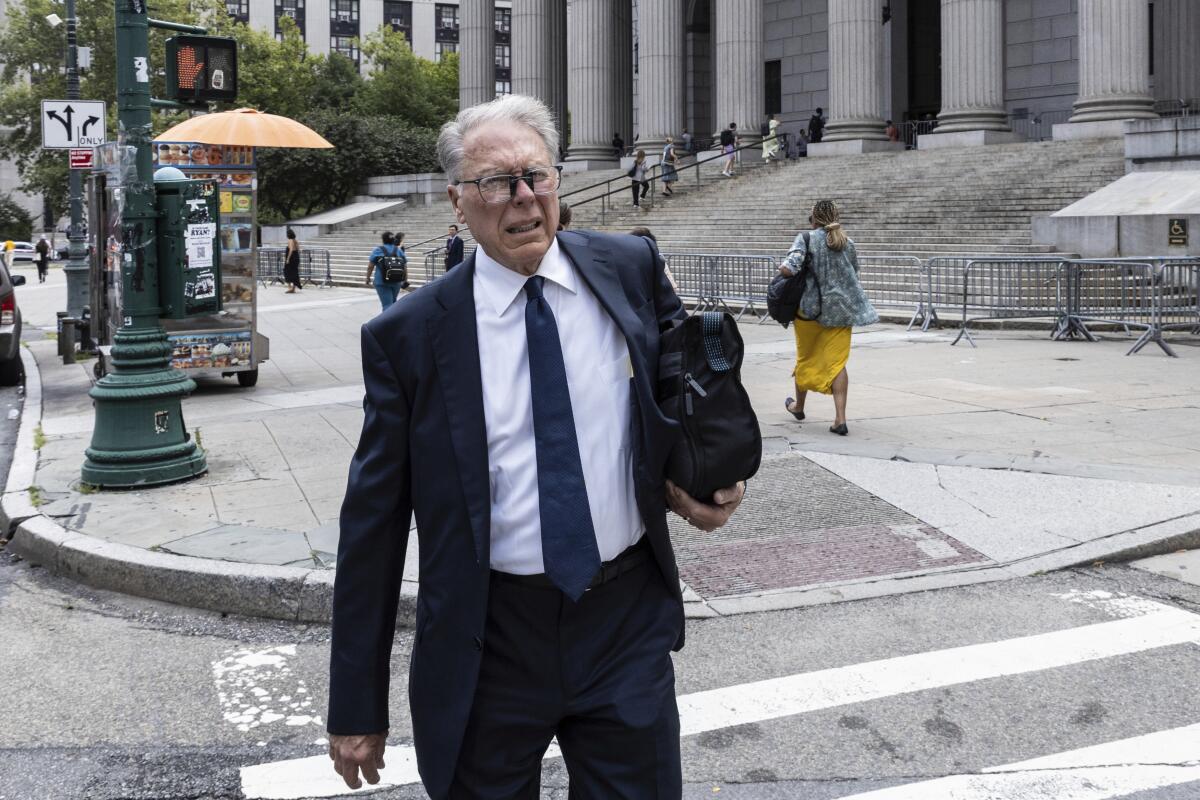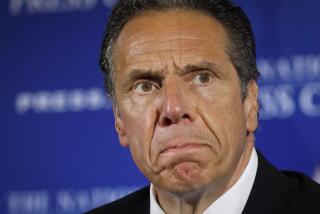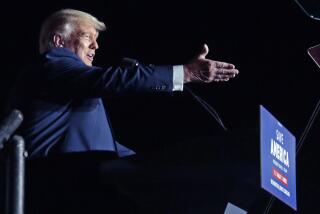Second phase of NRA civil trial over the gun rights group’s spending begins in New York

- Share via
NEW YORK — The second phase of the civil trial against the National Rifle Assn. and its top executives began Monday in Manhattan, with New York Atty. Gen. Letitia James seeking an independent monitor to oversee the powerful gun rights group.
The Democrat also is seeking to ban Wayne LaPierre, the organization’s former chief executive, from serving in leadership positions for or collecting funds on behalf of charitable organizations conducting business in New York, as well as seeking to impose other restrictions on John Frazer, the organization’s corporate secretary and former general counsel.
During the first phase of trial earlier this year, a jury in February found LaPierre misspent millions of dollars of NRA money in order to fund an extravagant lifestyle that included exotic getaways and trips on private planes and super yachts.
The National Rifle Assn. has been beset by dwindling membership and financial troubles, and questions about Wayne LaPierre’s leadership and spending.
Jurors also found the NRA failed to properly manage its assets, omitted or misrepresented information in its tax filings and violated whistleblower protections under New York law.
The second phase of proceedings in Manhattan state court is a bench trial, meaning there is no jury and the judge will hand down the verdict. It is expected to last about two weeks, with Charles Cotton, a former NRA president, first to take the witness stand.
LaPierre is not required to attend, according to his lawyer, but he was in the courtroom Monday.
The NRA, through its lawyer, called the request for a court-appointed monitor to oversee administration of the organization’s charitable assets “unwarranted.”
William Brewer, a lawyer for the NRA, said Friday that the organization was the victim in the case and has since taken a “course correction” to make sure it is fully complaint with the state’s nonprofit laws.
The lines appear to have been drawn in the coming “stand your ground” standoff.
“The focal point for ‘phase two’ is the NYAG’s burden to show that any violation of any law is ‘continuing’ and persistent at the NRA,” he said in an email. “This is a burden the NYAG cannot meet.”
Spokespeople for James declined to comment ahead of Monday’s proceedings, as did a lawyer for LaPierre. An email also was sent to Frazer’s lawyer.
Bob Barr, the organization’s president and a former congressman, and Douglas Hamlin, the NRA’s CEO, are among the current employees and board members also listed as potential witnesses, according to James’ office.
The first phase of the trial cast a spotlight on the leadership, organizational culture and finances of the lobbying group, which was founded more than 150 years ago in New York City to promote rifle skills and grew into a political juggernaut that influenced federal law and presidential elections.
The jury ordered LaPierre to repay almost $4.4 million to the organization he led for three decades, while the NRA’s retired finance chief, Wilson “Woody” Phillips, was ordered to pay back $2 million.
Last week, James’ office announced details of a settlement it reached with Phillips.
Under the agreement, he agreed to be banned for 10 years from serving as a fiduciary of a not-for-profit organization in New York. He also agreed to attend training before returning to any such position.
The deal means Phillips, now retired, doesn’t have to take part in the proceeding that started Monday, but he is still on the hook for $2 million in damages from the initial verdict.
Marcelo writes for the Associated Press.
More to Read
Sign up for Essential California
The most important California stories and recommendations in your inbox every morning.
You may occasionally receive promotional content from the Los Angeles Times.











